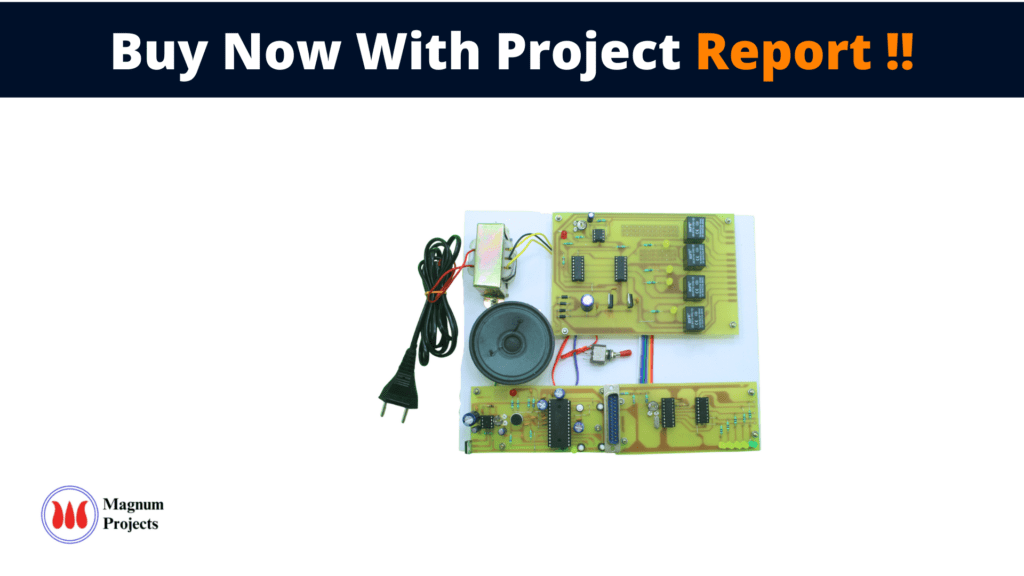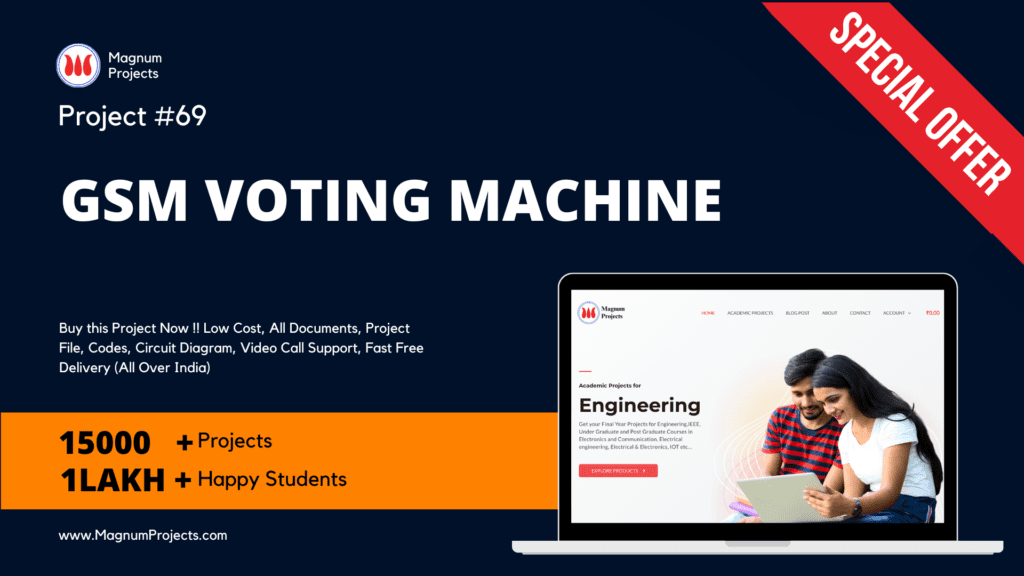Table of Contents
Introduction:

In democratic societies, voting is an important tool to collect and reflect people’s opinions. Traditionally, voting is conducted in centralized or distributed places called voting booths. Voters go to voting booths and cast their votes under the supervision of authorized parties. The votes are then counted manually once the election has finished. With the rapid development of computer technology and cryptographic methods, electronic voting systems can be employed that replace the inefficient and most importantly error-prone human component. To increase the efficiency and accuracy of voting procedures, computerized voting systems were developed to help collect and count the votes.
The GSM Based smart voting machine is a system with which we can vote from any destination using our mobile phone. We need to call the voting server no. After connecting the call, a voice message will be played from the server to enter the correct password depending on our mobile no. The voter ID is fixed. After entering the correct password, a voice message will give the options and we can select the candidate and vote.

Block diagram explanation :
Power supply unit:
This section needs two voltages viz., +12 V & +5 V, as working voltages. Hence specially designed power supply is constructed to get regulated power supplies.
Buffers:
Buffers do not affect the logical state of a digital signal (i.e. a logic 1 input results in a logic 1 output whereas logic 0 input results in a logic 0 output). Buffers are normally used to provide extra current drive at the output but can also be used to regularize the logic present at an interface.
Drivers:
This section is used to drive the relay where the output is the complement of input which is applied to the drive but the current will be amplified.
Relays:
It is an electromagnetic device that is used to drive the load connected across the relay and the o/p of the relay can be connected to the controller or load for further processing.
Indicator:
This stage provides a visual indication of which relay is actuated and deactivated, by glowing respective LED or Buzzer.
PC with software & database:
The output of Buffer has enhanced decoded vehicle registration number, which is fed to PC’s port through the interface circuit. The software recognizes the decoded signal and starts scanning its database for the details. After fetching the details, it shows it in standard fashion on the screen for the operator’s knowledge. And also checks ‘Current Status of the vehicle: if the vehicle is blacklisted by any authority then marked as ‘dirty’; otherwise marked as ‘Clear’.
Voice recorder:
The APR9600 device offers true single-chip voice recording, non-volatile storage, and playback capability for 40 to 60 seconds. The device supports both random and sequential access to multiple messages.
Sample rates are user-selectable, allowing designers to customize their designs for unique quality and storage time needs. Integrated output amplifiers, microphone amplifiers, and AGC circuits greatly simplify system design. many other consumer and industrial applications.
APLUS integrated achieve these high levels of storage capability by using its proprietary analog/multilevel storage technology implemented in an advanced Flash non-volatile memory process, where each memory cell can store 256 voltage levels. This technology enables the APR9600 device to reproduce voice signals in their natural form. It eliminates the need for encoding and compression, which often introduce distortion.
Methodology:
This project is designed to achieve voting just by a single call.
The main modules in this project are:
When a person wants to vote he should call the given number. In the receiver circuit receives the call that number is decoded by the DTMF decoder and keeps on sensing tone frequencies. As soon as a valid DTMF digit is detected. Asks person’s ID, then displays options on PC like press 1 to vote BJP, press 2 to Congress. Similarly, for other parties they have select.
Whenever the person inputs their option then a voice announcement will be activated which indicates an acknowledgment for their inputs.
In computer, the coding is done in C language. After voting is done then the admin can enter the password and can see the result.
Advantages:
- Democracy: All and only the authorized voters can vote, and each eligible voter can vote no more than once. Voters can also choose not to vote.
- Privacy: All votes remain secret while voting takes place and each vote cannot be linked by any individual or authority to the voter who casts it.
- Accuracy: The voting result accurately reflects voters’ choices. In this case, no vote can be altered, duplicated, or eliminated without being detected.
- Fairness: No partial result is available before the final result comes out.
- Verifiability: where any voter can check that her vote has been considered in the tally.
Disadvantages:
- One-time investment cost.
Applications:
- Remote areas.
- Villages.
- Banking.
- Shopping.
Hence by implementing this project we can make every citizen to vote by sitting at their places




